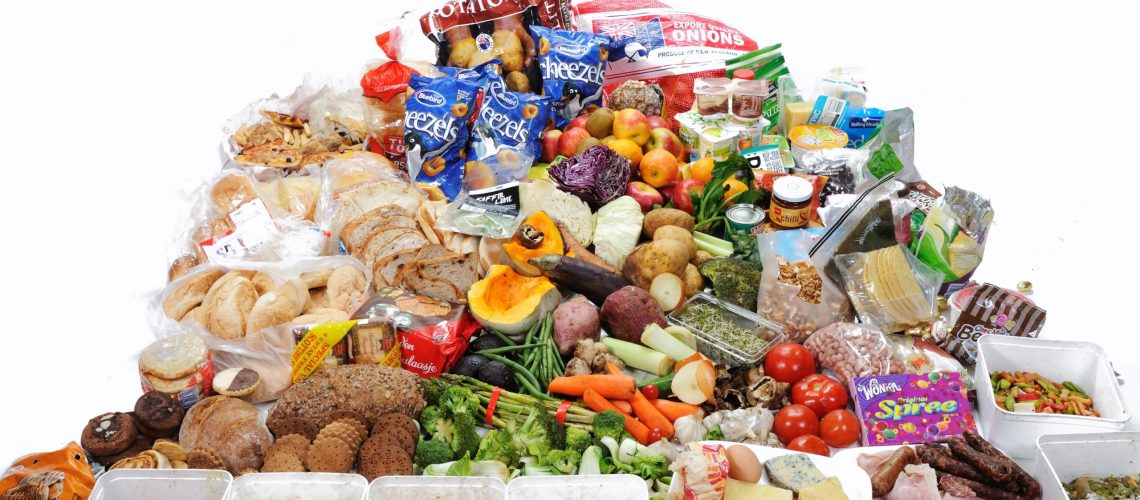How Real-Time Visibility of the Supply Chain Can Help Mitigate Food Waste : In today’s market, consumer demands have not only driven supply chain efficiencies for greater speed and convenience but are increasingly now forcing retailers to address expectations of improved sustainability. The consequences of keeping up with customers’ wishes aren’t always easy and may have an adverse effect on short term business plans and processes, especially if your supply chain isn’t as seamless and transparent as it should be. Even the smallest of inefficiencies can add up and lead to all manner of waste during production, transport and even disposal.
Over recent years, the grocery market has come under scrutiny and intense pressure to re-evaluate its approach to tackling food waste, with around 88 million tonnes worth being generated yearly across the EU, a staggering 40% of food doesn’t even make it to the market.
The problem is, without real-time insight into the exact status and condition of product and inventory within the end-to-end supply chain, what options do companies have to address waste and improve customer engagement? Amir Harel, General Manager of Visibility Solutions at Zetes, explores how complete real-time, intelligence-driven visibility of the supply chain can help mitigate food waste.
The Lack of Supply Chain Visibility
The world is ready for change. According to REFRESH, an EU research project acting against food waste, resources being lost and wasted in Europe would be enough to feed all the hungry people in the world twice over. It’s a message that consumers around the world are taking to heart. From reusable bags to paper straws, and bottle-free toiletries to meat-free diets, people are taking real steps to reduce waste, and they expect the businesses they buy from to do the same.
In the UK, for instance, grocers have encouragingly pledged to halve their food waste from ‘farm to fork’ by 2030. Whilst we commend large retailers for deploying innovative ideas such as the introduction of ‘wonky veg’ – vegetables that do not meet the aesthetic requirements of supermarkets due to shape or appearance – are now being sold in supermarkets to help combat waste, it is analysing the production of waste on a more granular level that will achieve a positive environmental impact at a far greater scale and have more effect.
Yet, recent research from Sapio, on behalf of Zetes, reveals that the current levels of supply chain visibility are far from perfect, with a staggering 94% of organisations surveyed saying they lack transparency throughout their supply chain.
Unlock Capability
To implement an appropriate resolution, it is imperative that the cause of waste is understood. There are so many contributors – from the excess inventory that arises from poor and/or delayed forecasting and orders, to time lost during the distribution process coupled with inefficient transportation models can be devastating for any short shelf-life products. Just 30% of organisations have full visibility of goods in transit. As a result, addressing the food waste that occurs at every stage of the supply chain is a complex task.
Research highlights that 79% believe that improved visibility would have a material effect on cutting wastage. As a taste of the potential savings, it’s estimated that supply chains could reduce food waste alone by €240bn.
For example, reducing empty miles, improving first time in full delivery, minimising unnecessary stock movement between stores, avoiding forecasting or ordering disputes and achieving far more intelligent routing, are all critical components for an efficient supply chain that minimises waste.
Real-time efficiency
Having complete visibility and traceability of products is also key to a resilient supply chain, which is especially important when recalls and faults in production can cause crisis situations and disruptions. When retailers are able to share data throughout their supplier ecosystem in real time, they can create the foundations for better collaboration based on stronger connections and highly effective dynamic forecasting.
It is also essential that companies understand how technology can be deployed and utilised to address each challenge – whether that is waste reduction through improved transportation or more accurate and dynamic levels of stock availability.
So, where to start?
Environmental consciousness in the digital age will continue to have a huge impact on retailers. The vision to transform ‘farm to fork’ and remove food waste from the supply chain is big. To succeed, retailers need to start small, identifying priority areas first, where quick and impactful wins can be realised. As they start to see results, they will be able to scale fast and ultimately achieve full end-to-end intelligence-driven visibility.
Manufacturing & Engineering Magazine | The Home of Manufacturing Industry News















